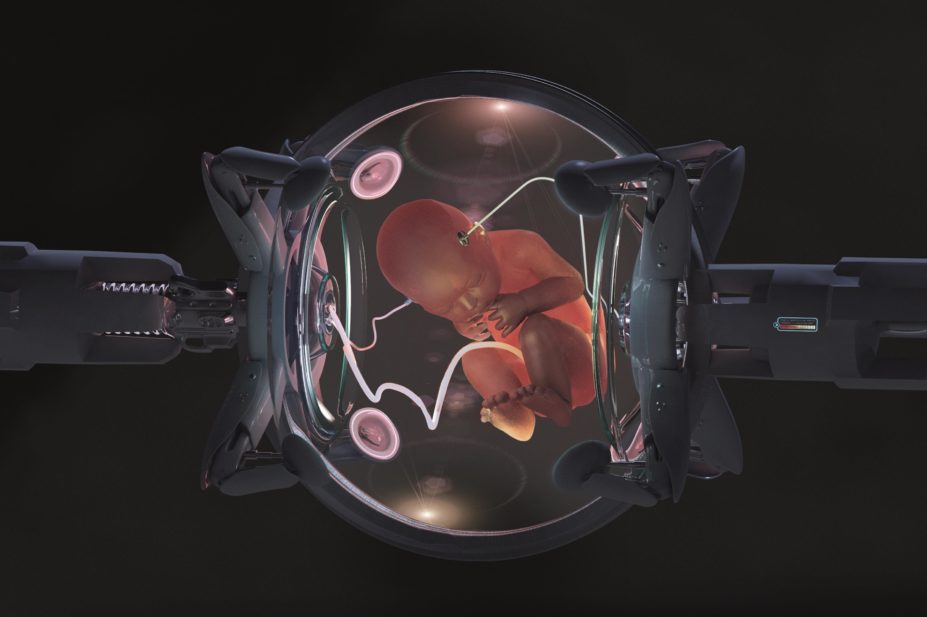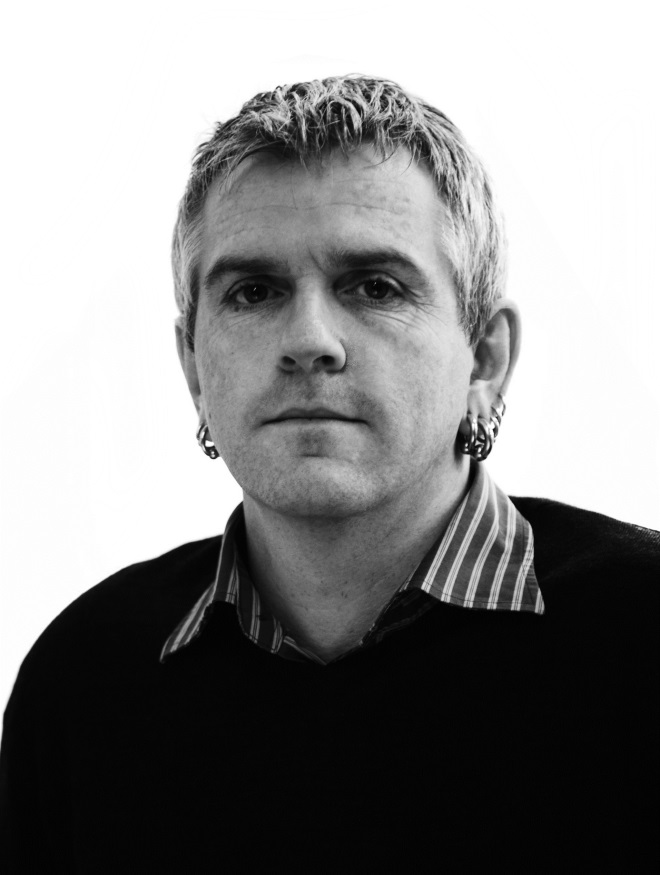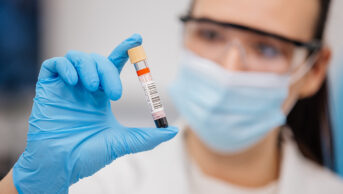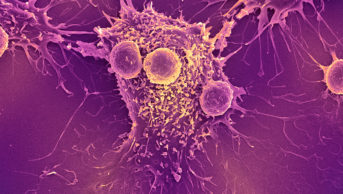
Coneyl Jay
Gene therapy involves inserting a gene into a patient’s cells to treat or prevent disease instead of using drugs or surgery. Although still experimental, gene therapy aims to target the root cause of a disease, such as gene transfer into the individual cell types of the complex lung structure in cystic fibrosis patients, and has the potential to save a patient from a lifetime of complicated treatments all the while suffering the condition.
Research into using gene therapy to prevent diseases such as cancer and diabetes is showing some potential. However, it is the power of gene therapy to enhance humans that is causing the greatest concern. In September 2015, scientists at London’s Francis Crick Institute applied for a licence to use technology based on the CRISPR/Cas9 system — a recently developed technique for precisely editing genomes to study early human development – to edit genes in human embryos.

There is too much at stake
Just because we have the capability to perform enhancement it does not mean we should proceed.
By Robert Sparrow, professor of philosophy, Monash University, Australia
Scientists, philosophers and science fiction authors have been discussing designer babies since the 1930s. However, the issues they have been discussing have remained theoretical because of the difficulty in getting genes to do what they want. The new technology of genome editing, known as CRISPR/Cas9 (clustered regularly interspaced short palindromic repeats), which makes possible precise modifications of the genetics of organisms, changes things dramatically. Genetic modification of humans now looks all too possible.
Researchers and corporations are rushing to investigate — and hopefully exploit — the potential of this new technology to modify human beings genetically.
Many of the proposed applications would involve modifying patients’ somatic cells (any cell of the body except sperm and egg cells) in the hope of curing, or at least ameliorating, particular diseases and genetic disorders, thus eliminating the need for a lifetime of medical and drug treatment. Such uses of CRISPR/Cas9 would hold tremendous promise. However, they are not my concern here.
Some scientists have been quick to tout the potential of this new technology as a possible “cure” for some forms of infertility and to prevent various genetic diseases affecting future individuals[1]
. These hypothetical techniques would entail editing the genome of human embryos or of stem cells — a practice currently outlawed in the UK — that might then be coaxed into developing into sperm and eggs. What makes such hypothetical uses of genome editing especially controversial is that the genetic modification would — or at least could — affect the germline of the individuals who were brought into existence. Should something go wrong, multiple generations would be at risk.
Yet, discussion of the therapeutic potential of germline modification is in many ways a distraction. The real potential of CRISPR/Cas9 lies elsewhere.
Human enhancement
There are already means to allow affected individuals to have healthy children[1],[2]
. In particular, preimplantation genetic diagnosis (PGD) allows doctors to choose which of a number of embryos created outside the human body to implant into a woman’s womb in order to ensure that a child is born without particular undesirable genes. Only when a couple is unable to produce viable embryos that do not carry genes for a disorder using their own gametes would there be any grounds for attempting to cure affected embryos by editing their genomes. Even in such cases, couples could always have children using donor sperm and/or donor ova. Similarly, individuals who are unable to produce viable gametes are able to use donor gametes to create embryos and secure a pregnancy.
Rather than a cure for a disease, then, genome editing would function solely as a means to satisfy the preferences of couples to raise children who were their genetic offspring. One cannot help but marvel at the success of the marketing of reproductive medicine, which has brought us to the point where it could seem reasonable to prefer a child who had been genetically modified rather than a child who was related to someone other than his or her social parents.
What germline modification could do that existing technologies cannot is produce embryos with particular genes associated with desirable traits[1]
. If scientists can find genes that are associated with above-species-typical traits — for example, higher intelligence, longevity, concentration or memory — CRISPR/Cas9 will allow them to insert these genes into embryos. In theory, at least, the CRISPR/Cas9 system would allow parents to insert genes for as many desirable traits as they liked into the genome of their child.
Reasons for caution
No matter how many animal trials we perform, there will be no way to be sure how the modification will affect a human child as they mature. It is also worth admitting the limits of our ability to bend living things to our designs even with this incredible new tool.
The more we learn about genetics, the more complicated the interactions between genes and the environment — which produces the phenotype of the organism — appear. It is one thing to be able to cut and paste DNA but it is another to know what the result will be, especially because modifications to one part of the genome can have unexpected effects elsewhere. Of course, concerns about risks to health are arguably as much of a barrier to therapeutic use of CRISPR/Cas9 as they are to its use for human enhancement.
Cynically, it seems that references to risk often serve as a smokescreen to defuse public anxiety about potential applications of new reproductive technologies, while research on them continues. While scientists cannot do something, it would be too risky to try. The moment they can do it, the potential benefits mean that it would be irresponsible not to.
Let us not be deluded, then, that the renewed debate about germline genetic engineering, prompted by CRISPR/Cas9, is about rescuing a small number of individuals from the burden of genetic disease. It is nothing less than a debate about what it will mean to be human in the future. Will our grandchildren — or perhaps even children — be born all equally subject to the vicissitudes — and the joys — of the genetic lottery?[3]
Or will they be made? Stronger, better perhaps — children of the wealthy more so than others — but are created by designers and so are vulnerable to obsolescence[4]
.
There is a choice to be confronted here but it is a difficult one. To make a decision wisely we will need to draw on all our resources and, in particular, our deepest values about what sort of world we want to live in, with what sorts of human flourishing. It would be a dreadful mistake to allow enthusiasm for impressive science and the vague promise of therapeutic benefits to distract us from the vital importance of this debate.

Do not block a technology that could benefit people
Genetic enhancement should be looked at on a case-by-case basis — a blanket ban on the technology will do us no favours.
By Glenn Cohen, faculty director, Petrie-Flom Center for Health Law Policy, Biotechnology & Bioethics, Harvard Law School, Cambridge, Massachusetts
CRISPR-Cas9 allows DNA sequence changes in pluripotent embryonic stem cells that can then be cultured to produce specific tissues, such as cardiomyocytes or neurons[5]
. The hope is that it will lead to much more refined approaches to a range of human diseases, but there are also concerns that it can be used to change the DNA in the nuclei of reproductive cells that transmit information from one generation to the next (an organism’s “germline”), prompting a group of prominent scientists and ethicists to recommend a temporary (at least) moratorium on any human clinical uses.[5]
Gene editing is but one of a series of forms of human enhancement. And while it perhaps poses the most safety risks in its germline form, the fear is we will make changes that pose risks that may not manifest until many generations downstream when the cat will be out of the proverbial bag.
“Genetic engineering” is not a single phenomenon. It represents a series of different subcategories and they have to be examined individually. By seeing the full panoply of cases, we can see that sometimes we may be engaged in a kind of biological exceptionalism — that what strikes us as scary in the biological context is something we do in the non-biological context routinely, and we need to examine whether the biological versus non-biological, as well as other lines, are morally significant ones.
Is the distinction valid?
When discussing the issue of gene therapy and, ultimately, genetic engineering, it is useful to make a distinction between biological and non-biological enhancement[6]
. For example, a hypothetical pill or surgery to raise one’s performance on standardised testing versus tutoring to improve one’s performance on standardised testing. The first seems to concern us, while the second is common place. Some might also distinguish genetic from non-genetic biological enhancement. We should also consider the concept of choosing for ourselves as opposed to choosing for others. For example, an adult using anabolic steroids versus providing human growth hormone for a child.
Some enhancements are like “swiss army knives” in that they can improve the prospects for a child, whatever the child chooses to do with his or her life, for example, improvements in intelligence or disease resistance. On the other hand, some enhancements will serve to close off certain life plans while they improve the chances in others. To give a trivial example, enhancing height may increase a person’s chance of becoming a professional basketball player, but decrease their chance of riding a racehorse to glory. The same is true regarding non-biological enhancements. Ethicists are usually more worried about the latter category.
Treatment versus enhancement
Some would draw distinctions between “treatment” to correct disease or disability as opposed to enhancement to make people “better than well.” For example, a colleague of mine defines the distinction in relation to “species typical” functioning[7]
. Others, including myself, are sceptical and think this falls prey to a classic baseline problem and treats our status quo states of health or other goods as morally significant.
Some would also draw a finer sub-distinction between enhancements to the upper bounds of what people already have versus enhancements that add beyond human nature as it now stands but, again, one might wonder why give moral pride of place to our own current status quo.
Finally, some goods, such as being tall, are beneficial primarily in a positional sense — they are desirable to have only because others lack them. By contrast, other goods, such as immunity to disease, are primarily absolute goods, in the sense that one would want to have the enhancement even if everyone were to have it.
Using enhancement for positional goods may particularly exacerbate inequalities of access and also impose costs (to our health, for example) that create a kind of evolutionary rat race where people must enhance merely not to fall behind.
Most traits, though, are mixes of positional and absolute goods, in that they are sought to confer positional advantage and because they have absolute benefit. Indeed, determining just how much a particular trait is valued for positional as opposed to absolute value may be difficult or costly to determine.
To evaluate whether the law should permit or prohibit or otherwise regulate any particular form of human enhancement, it is useful to first situate it within this taxonomy. When enhancements impose costs on the enhancer, or especially externalised costs, that is more problematic when the good sought is more positional than absolutely beneficial. The less reversible an enhancement, the more the concerns about safety but also its effects on social change loom large. And so on.
Some enhancements have the potential to improve the human condition as we know it and some have the potential to wreak havoc on our lives and social structure. Anyone who has a position on enhancement has not thought deeply enough on the question. The right answer to the regulatory, legal, and ethical questions can only be answered on a category-by-category basis.
Either way, pharmacogenetics, gene therapy and, ultimately, genetic engineering will continue to progress. We have already seen this earlier this year, when Chinese scientists reported editing the genomes of human embryos[8]
. The results were published in the journal Protein & Cell
[9] and sparked widespread debate about the ethical implications of such work.
No doubt, this debate will continue.
References
[1] Regalado A. Engineering the perfect baby. MIT Technology Review. 5 March 2015.
[2] Lanphier E, Urnov F, Haecker SE et al. Don’t edit the human germ line. Nature 2015;519:410.
[3] Buchanan A, Brock DW, Daniels N et al. From chance to choice. Cambridge: Cambridge University Press; 2000.
[4] Sparrow R. Enhancement and obsolescence: avoiding an “enhanced rat race”. Kennedy Inst Ethics J 2015; forthcoming (accepted 22 August 2014).
[5] Baltimore D, Berg P, Botchan M et al. A prudent path forward for genomic engineering and germline gene modification. Science 2015;348:36–38.
[6] Cohen IG. What (if anything) is wrong with human enhancement? What (if anything) is right with it? Tulsa Law Review 2014;49:645–687.
[7] Daniels N. Just Health: Meeting Health Needs Fairly. Cambridge: Cambridge University Press; 2008.
[8] Cyranoksi D & Reardon S. Chinese scientists genetically modify human embryos. Nature 22 April 2015.
[9] Liang P, Xu Y, Zhang X et al. CRISPR/Cas9-mediated gene editing in human tripronuclear zygotes. Protein Cell 2015;6:363–372.


